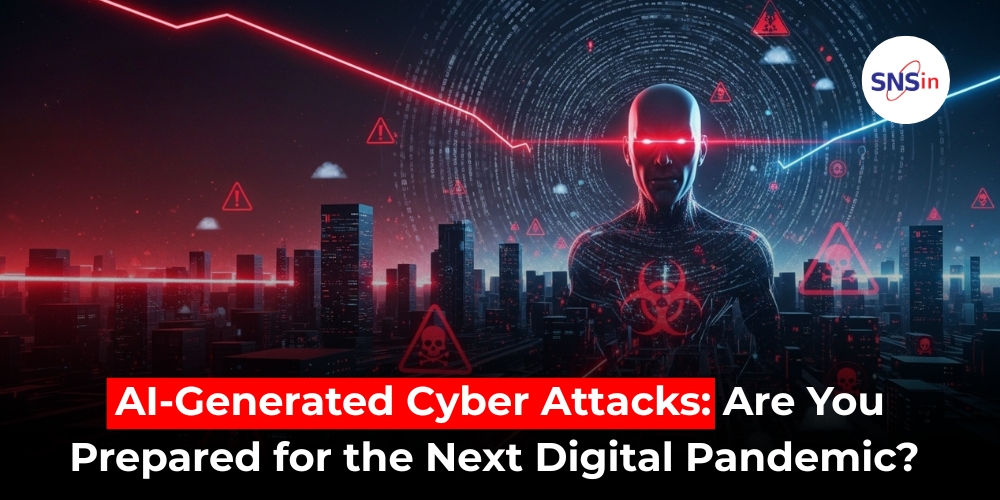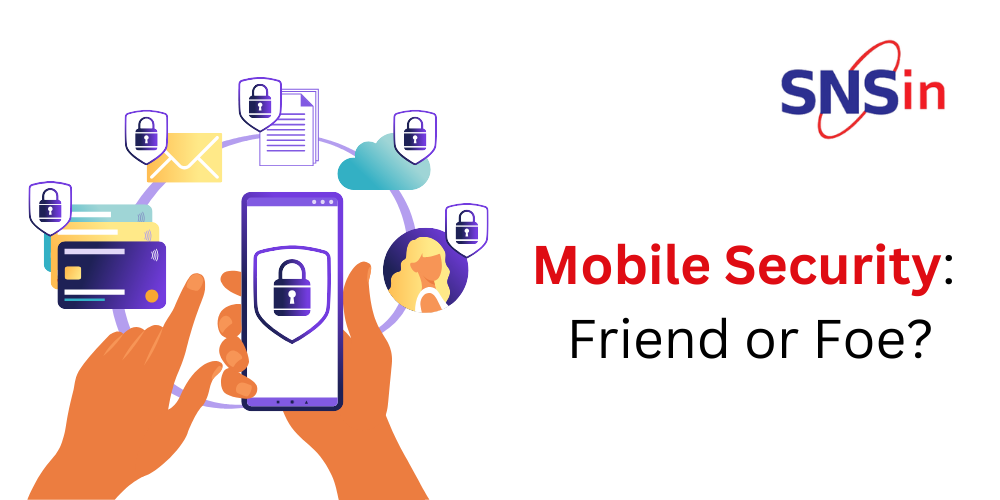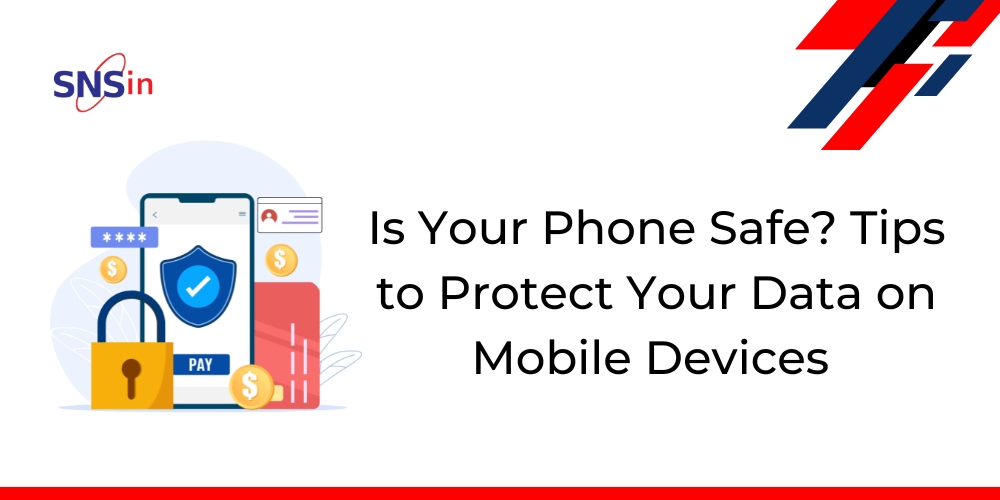Picture This:
It’s 9:03 AM. You’re halfway through your morning chai, inbox open, planning the day ahead. Suddenly, your laptop acts up — files refuse to open, the mouse lags, and that dashboard your team uses? Blank.
Within minutes, your office WhatsApp group turns into a digital war room.
“Guys, the server’s down!”
“Did someone mess with the database?”
“Who opened that ‘invoice’ from last night?”
Meanwhile, your IT guy stares into his screen like he’s decoding an alien message. Except the alien, in this case, is an algorithm.
Welcome to the frontlines of today’s cyber war. Forget the stereotypical hacker hunched in a hoodie. The real threat now? Machine-learning-powered, code-writing, data-devouring bots that can outsmart most human defenses.
No, this isn’t the plot of a sci-fi thriller. This is our new reality — and it’s already knocking on your firewall.
So, What Exactly Are AI-Generated Cyber Attacks?
Let’s break it down without the jargon.
AI-generated cyber attacks are not just your regular viruses with a slick new interface. These attacks are created, guided, or turbocharged by artificial intelligence — making them faster, smarter, and downright eerie in how real they seem.
Imagine someone who knows your voice, your writing style, your company hierarchy, and even the tone of your Monday morning emails. Now imagine that “someone” isn’t a person, but a machine that learned all of that in seconds — just by scanning public data.
That’s not a hacker. That’s AI playing dress-up — as you.
Here’s a Simple Analogy:
- Old-school malware? Like a thief smashing a window with a brick.
- AI-generated malware? Like a thief who has your fingerprints, your house key, and even knows where your dog treats are kept so he doesn’t bark.
One is brute force. The other is infiltration — smooth, strategic, and devastating.
Scary? Absolutely. But understanding the threat is the first step to fighting back.
Anatomy of an AI-Powered Cyber Attack:
Let’s break down how AI is changing the game in three words: Speed, Stealth, and Scale.
1. Phishing, Now on Steroids:
AI-driven phishing campaigns are dangerously personal. Instead of blasting “Dear Customer” emails, hackers now train AI models on your social media and business data.
The result? A message that sounds eerily like your boss, referencing yesterday’s Zoom meeting, asking you to “urgently share those files.”
That’s not random. That’s targeted social engineering, with AI as the puppet master.
2. Deepfakes and Voice Clones:
Remember when a spoof email was the biggest worry? Now imagine a voice note from your CEO asking for a financial transfer. Same voice. Same tone. Same urgency.
Except it’s a lie — generated by AI after scraping just 10 seconds of audio from an old webinar.
Voice phishing, or “vishing,” is no longer theoretical. Companies have already lost millions of dollars falling for AI-crafted calls.
3. Self-Mutating Malware:
Traditional viruses can be caught by antivirus signatures. But AI-powered malware? It learns. It mutates. It knows when to lie low and when to strike.
It’s like a digital chameleon — always changing colors, always staying one step ahead of your defenses.
Why Call It a “Digital Pandemic”?
Let’s draw the parallel.
Just like COVID-19:
- It spreads fast.
- It evolves quickly.
- It’s hard to detect early.
- It affects everyone — from corner shops to global banks.
- And it forces us to rethink everything about our defenses.
During the pandemic, we realized that prevention was cheaper than the cure. The same applies here. Except instead of masks and sanitizers, we need AI-powered defenses, cybersecurity hygiene, and a shift in how we approach digital risk.
Real-World Case: When AI Got Dangerous:
In 2023, a prominent Indian fintech startup experienced a breach that didn’t make the headlines — but shook its foundations.
An employee received a convincing Slack message from “HR” about a pending form. The link looked perfect. The landing page mimicked their internal portal. She logged in.
In seconds, her credentials were used to enter the system. Customer data began leaking — silently — for four hours before a behavioral anomaly detection system finally raised a red flag.
The source? An AI-powered phishing tool that monitored employee behavior, mimicked internal communications, and executed a fake login portal using generative AI tools.
Lesson? It’s not about bad luck. It’s about being unprepared for bad intelligence.
So… Are You Prepared?
Let’s get real for a second. AI is not the villain. In fact, it can be your best weapon — if used right.
Here’s how you can flip the script:
1. Invest in AI-Driven Defenses:
Use AI to fight AI.
Modern cybersecurity platforms don’t just block known threats. They predict, learn, and evolve. Behavioral analytics tools, anomaly detection systems, and predictive algorithms can spot unusual behavior before damage is done.
If a junior accountant suddenly downloads 3,000 files at midnight from an IP in Uzbekistan, your AI security should flag that — immediately.
2. Cyber Awareness: The New PPE:
Train your team like your business depends on it — because it does.
Run phishing drills. Use real-world examples. Reward caution. Teach employees to spot AI-generated content. Make them skeptical — of emails, voice messages, even Slack pings.
Your people are your first firewall. Build them well.
3. Zero Trust Architecture (ZTA):
Think of ZTA as the new social distancing.
No one gets access just because they’re inside the network. Everyone is verified. Every device, every time.
If someone’s laptop starts behaving strangely — say, accessing data it never has before — ZTA kicks in and restricts access immediately.
It’s not paranoia. It’s prevention.
4. Cybersecurity Playbooks for Emergencies:
Just like hospitals had pandemic protocols, your business needs incident response plans.
What happens if your data is locked by ransomware? Who do you call? How do you notify clients? What’s your legal and PR strategy?
Write it down. Test it. Update it.
5. Monitor the Threat Landscape Constantly:
AI tools are improving weekly. So are AI-based attacks.
Subscribe to threat intelligence feeds. Work with security focused partners like SNS India to keep your security stack modern and proactive.
Cybersecurity isn’t “set and forget.” It’s “set, update, adapt, repeat.”
Final Thoughts: Prevention Is the Best Antivirus:
The next big cyberattack may not be built by a hacker — but by an algorithm trained on millions of successful breaches. It won’t knock on your door. It will slide into your inbox, or your voice messages, or that innocent-looking file upload.
The digital pandemic is not a question of if, but when. And in this era, hope is not a strategy.
Preparation is.
If you’re unsure about your cybersecurity posture or want to explore how AI-powered defense systems can protect your business, SNS India is here to help. We don’t just sell tools — we build strategies that evolve with threats.
Because when the attack is smarter, your defense needs to be brilliant.
Get in touch with SNS India today — let’s get you prepared properly. Write to us at [email protected]
Author
NK Mehta
![]()




